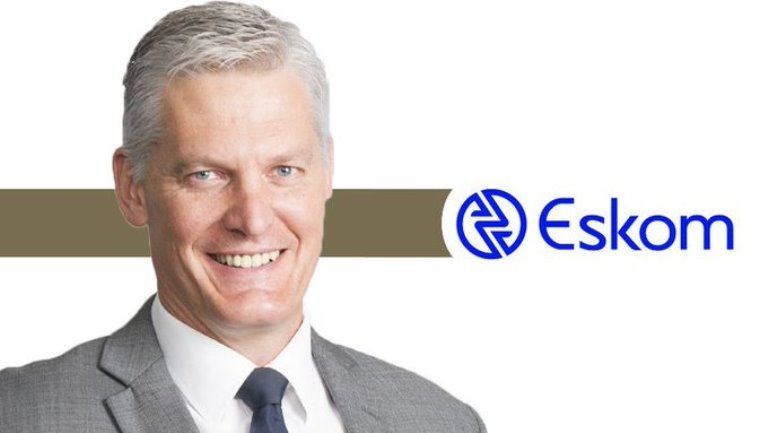
Eskom’s Plant Maintenance Efforts to Bear Fruit in 2021
Eskom’s maintenance efforts, which will help reduce load shedding, are likely to bear fruit next year, says Eskom Chief Executive Officer André de Ruyter. Speaking at the two-day Joburg Indaba that concluded on Thursday, de Ruyter said plans are in place to enable Eskom to achieve operational stability and, subsequently, significantly reduce the risk of […]

Eskom’s maintenance efforts, which will help reduce load shedding, are likely to bear fruit next year, says Eskom Chief Executive Officer André de Ruyter.
Speaking at the two-day Joburg Indaba that concluded on Thursday, de Ruyter said plans are in place to enable Eskom to achieve operational stability and, subsequently, significantly reduce the risk of load shedding.
“These stem from our Maintenance Recovery Project, which aims to spur midlife refurbishment and conduct reliability maintenance to improve the energy availability factor (EAF). By April of next year, we shall see the first benefits of the enhanced maintenance, and by September of next year, we will have significantly reduced, but not eliminated, the risk of load shedding,” he said.
However, these efforts – to refurbish and maintain the plant and improve the level of performance and reliability – on the part of Eskom by itself are not enough to end load shedding.
“As a start, a stable supply system on its own brings confidence for business to start investing in new opportunities and the expansion of existing ones, which increases demand and further puts pressure on the infrastructure.”
Independent Power Producers
He said that South Africa needs additional generation capacity to serve existing demand, and to cater for a growing economy.
“And we need that additional capacity sooner rather than later,” he said, adding that Eskom has noted the concurrence of the National Energy Regulator of South Africa (NERSA) with the Department of Mineral Resources and Energy’s (DMRE) ministerial determination for the procurement of an additional 11 873MW of infrastructure over the years to 2030.
Eskom has also noted the ongoing progress in the emergency procurement of another 2 000 MW of generation capacity.
“As such, Eskom is looking forward to collaborating with the DMRE as well the IPP [Independent Power Producer] Office to enable an accelerated execution to bring additional capacity onto the grid in the shortest space of time possible. Early alignment and consultation are sure to result in more favourable and predictable outcomes.”
Revenue challenges
Commenting on the utility’s income statement, de Ruyter said this was under pressure.
Eskom’s revenue challenges are the result of lower sales volumes, which have seen an annual decline of 1% (for approximately the past 10 years), as well as the non-cost-reflective tariff increases granted by NERSA.
He said that without cost-reflective tariffs, Eskom’s business efficiency efforts will be of short-term benefit.
“Eskom has, thus, reviewed various revenue decisions by NERSA through the High Court. Unfortunately, this has been the only course of action available to a licensed entity in reviewing a revenue decision. Eskom does not want to be in court with its regulator, and looks forward to the appropriate legislative changes to allow for a less adversarial approach to resolving our differences.
“As we appeal for cost-reflective tariffs, we also have an obligation to manage our costs properly and in a disciplined manner. We, therefore, don’t ask for tariffs to subsidise our inefficiencies – we ask for tariffs that reflect reasonably incurred costs,“ he said.
His comments follow a court decision granting the NERSA leave to appeal a High Court decision relating to Eskom’s fourth Multi-Year Price Determination (MYPD4).
In a statement on Wednesday, the regulator welcomed the granting of leave to appeal against the High Court of South Africa (Gauteng Division) judgment of 28 July 2020, which substituted the Energy Regulator’s decision on Eskom’s MYPD4 with its own.
In granting the leave to appeal, Judge Kathree-Setiloane indicated that the High Court of South Africa (Gauteng Division) is of the view that there are reasonable prospects of success, and that another court would come to a different decision.
The 28 July 2020 High Court decision allowed for a phased recovery of R69 billion in equity injections.
The court had ruled that the injections had been illegally deducted by NERSA on Eskom’s fourth Multi-Year Price Determination (MYPD4) for the 2019/20, 2020/21 and 2021/22 financial years.
The matter will now be heard by the Supreme Court of Appeal.
Debt owed by municipalities
On debt owed to Eskom by municipalities, the CEO said this is on the increase and described it as an “undisputed” threat to Eskom’s financial sustainability.
As at the end of August 2020, the arrear debt by municipalities was at R31.4 billion.
“Eskom simply does not have any other choice but to take action to recover this massive debt. While it gives us no pleasure, in order to accelerate this debt recovery process, the attachment of the bank accounts and seizure of assets belonging to defaulting municipalities have become part of our intensified efforts to collect this unpaid debt.
In such a situation, there are no winners. However, as a country, we must enforce the principle that those who use electricity must pay for it.”
He said Eskom is committed to pursuing all legal avenues to increase collection.
“We are also committed to ongoing engagements with government and various stakeholders to find a sustainable solution to this problem. The support that we have had from the Political Task Team led by the Deputy President has been instrumental in enabling us to carry out this work with resolve,” said De Ruyter. – SAnews.gov.za
